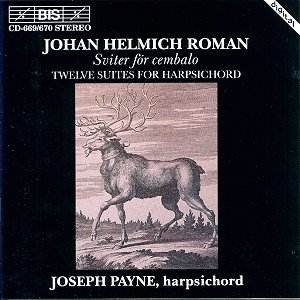 Composer: Girolamo Frescobaldi
Composer: Girolamo Frescobaldi
Works: Arie, toccate e canzoni
Performers: Anthonello (various instruments), Midori Suzuki (soprano)
Recording: May 2000, Länna Church, Sweden
Label: BIS
Girolamo Frescobaldi stands as a central figure in the transition between the Renaissance and Baroque eras, crafting a musical language that melds intricate counterpoint with emerging harmonic sensibilities. His works in Arie, toccate e canzoni offer a fascinating glimpse into the early 17th century, where the lush textures of Italian vocal music were in dialogue with the rhythmic vitality found in the folk traditions of Southern Europe. This recording by Anthonello, featuring a diverse array of instrumental and vocal music, serves as both an introduction to and a celebration of Frescobaldi’s multifaceted oeuvre.
The ensemble Anthonello, comprising instruments such as the cornetto, recorder, viola da gamba, harpsichord, harp, theorbo, and baroque guitar, alongside the exquisite soprano voice of Midori Suzuki, brings a vibrant energy to the performance. Each piece is treated with a keen sense of authenticity, allowing for an exploration of the various instrumental colors that Frescobaldi so deftly orchestrated. Particularly noteworthy is the soprano’s rendition of “Se l’aura spira,” where Suzuki’s voice navigates the plaintive melodies with a delicate yet expressive timbre, beautifully capturing the emotional depth of the text. The interplay between the voice and the instruments creates a compelling dialogue, reminiscent of the troubadour traditions that influenced these compositions.
While the musicianship is commendable, the recording itself presents some challenges. The prominence of the cornetto at times overshadows the more subtle textures provided by softer instruments, creating an imbalance that can detract from the overall sonic experience. This is particularly evident during pieces like “Canzona: La Nicolina,” where the cornetto’s brilliance eclipses the nuanced contributions of the harpsichord, which often feels relegated to an underwhelming background role. Conversely, the harpsichord’s presence in “Toccata nona” and “Toccata tertii toni” evokes echoes of William Byrd’s keyboard works, yet its understated treatment in the mix diminishes its potential impact.
Despite these engineering issues, the diversity of the repertoire is a highlight of this recording. The variety of forms—from the lively dance rhythms of the canzoni to the introspective nature of the arias—illustrates Frescobaldi’s range as a composer. The ensemble’s commitment to exploring this diversity is commendable; for instance, the energetic rhythms of “Aria di Romanesca: Dunque dovrò” contrast sharply with the reflective quality of “Sonetto spirituale: Maddalena alla Croce,” showcasing not only the flexibility of the performing musicians but also Frescobaldi’s ability to traverse emotional landscapes with ease.
Engagement with this recording offers both a worthwhile exploration of Frescobaldi’s work and an opportunity to appreciate the skills of Anthonello. While the sound quality may not fully realize the potential of these performances, the artistic choices and interpretative depth displayed by the ensemble affirm the importance of Frescobaldi’s music in the canon of early Baroque composition. This disc serves as an intriguing resource for those interested in the evolution of Italian music and the vibrant tapestry of sound that characterizes this transitional period. The combination of diverse instrumentation and thoughtful performance makes it a notable addition to the recording landscape, despite its technical shortcomings.



